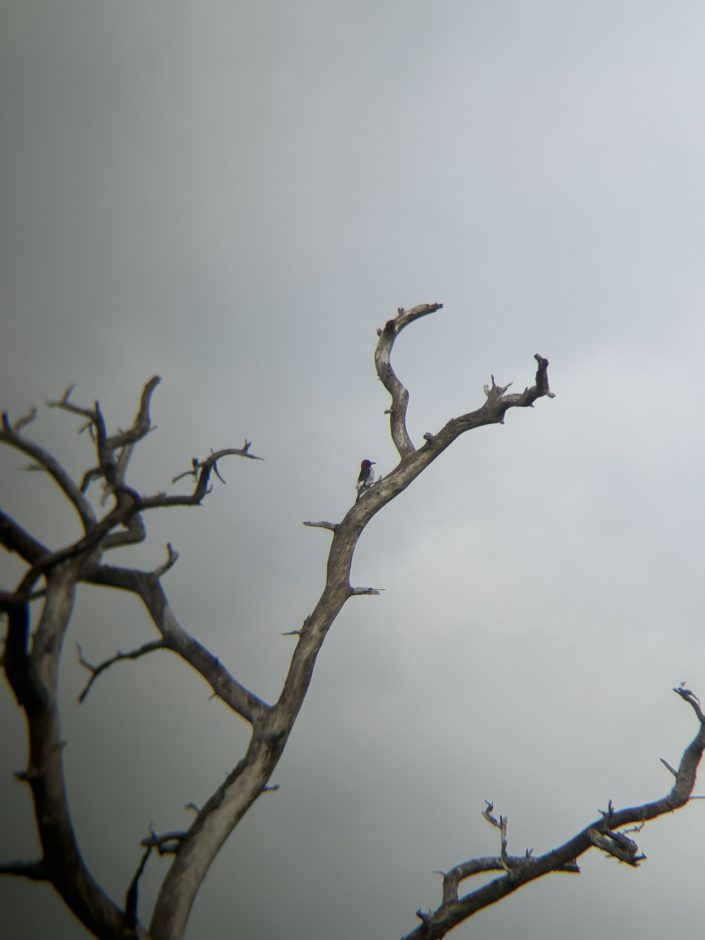Forest Bird Surveys at Joint Base McGuire-Dix-Lakehurst
by Leah Wells, Assistant Wildlife Biologist
CWF has been teaming up with partners from the USFWS New Jersey Field Office and JB MDL’s Natural Resources department to survey the installation’s forest for birds throughout the year. These surveys allow us to get an inventory of bird species found throughout the large expanses of protected natural areas within the base’s boundaries. So far this year, we have documented a diverse array of bird species passing through during migration and some resident species that stay year-round. During the springtime, we got to see warblers such as the black-and-white warbler, pine warbler, common yellowthroat, and American redstart.
Six of the forest bird species documented at the base are State-listed as either threatened or of special concern. The red-headed woodpecker, Melanerpes erythrocephalus, is a state-threatened species. They prefer open woods, both upland and wetland that contain dead or dying trees and sparse undergrowth. The Northern parula, Setophaga americana, and hooded warbler, Setophaga citrina, are both species of special concern during the breeding season. Both breed in mature forests, with the Northern parula nesting in trees and the hooded warbler nesting in shrubs. Wood thrush, Hlyocichla mustelina, is a species of special concern during the breeding season. The wood thrushes breed throughout mature deciduous and mixed forests. Ideal habitat for them includes trees that are over 50 feet fall, a moderate understory of saplings and shrubs, an open forest floor with moist soil and decaying leaf litter, and water nearby. The brown thrasher, Toxostoma rufum, is a species of special concern during the breeding season. This species is often found in woodlands with dogwood, pitch pine, or scrub oak. Lastly, the eastern whip-poor-will, Antrostomus vociferus, is another species of special concern here in NJ during the breeding season. These birds breed in dry deciduous or evergreen forests with little or no underbrush, close to open areas.
